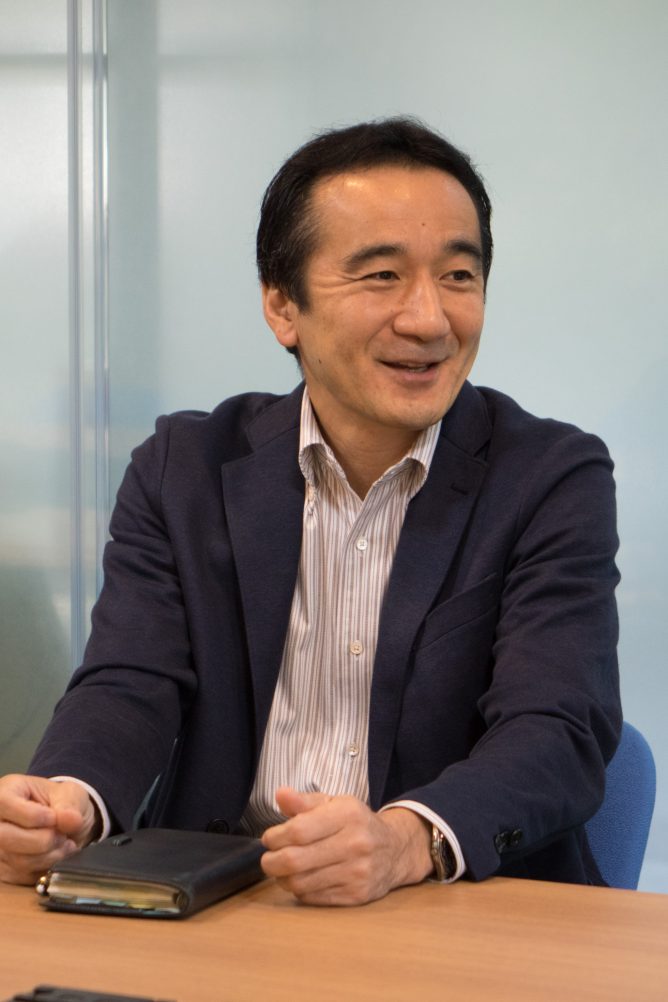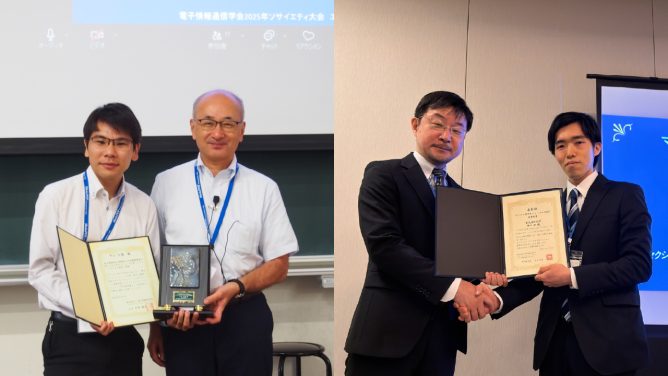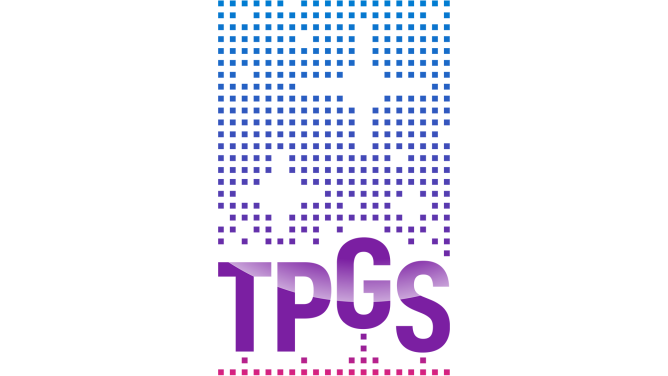2018.03.05
People Working for ALMA (2) Computing Work Connects Machines as well as People
What is Computing All About?
— Let’s start with a very basic question; what is computing all about?
Kosugi: To put it shortly, ALMA computing team conducts various software developments for making the ALMA telescope actually work.
— You are making software, not hardware like computer devices.
Kosugi: Right. The word “software” probably reminds most people of programs available on personal computer.
— Games and applications.
Kosugi: Exactly. Even if we have a computer like PC or smartphone, we cannot use it without software. Similarly, ALMA has supercomputers called “Correlator” in Chile. Enhanced computing capability is required for ALMA that processes enormous amounts of data to produce images of astronomical objects from data collected by up to 66 antennas. And such processing is carried out by the correlators. Our ALMA computing team develops software to control the Correlator and other types of software too.
— What other types of software are you making?
Kosugi: ALMA has roughly two types of software: one is “online software” which is used to operate observing instruments and systems in real time for actual observations. And another is “offline software” which is used before or after observation. For example, online software includes control software to make up to 66 antennas work in perfect order and software to send commands to the Receiver that has a measurement function of radio waves collected by antennas. Also, online software includes software to operate the Correlator that processes data from multiple antennas and software to store the data processed by the Correlator into the archives.

System diagram of ALMA. Various instruments including antennas, receivers, correlators, and data archive work in unison.
Credit: ALMA (ESO/NAOJ/NRAO)
Computing Builds Framework of ALMA
— On the other hand, what is the offline software?
Kosugi: To explain it, we need to begin with the introduction of the flow of observation with ALMA. First of all, researchers prepare observing proposals and submit them to the ALMA Observatory. When the proposal is accepted after the review, researchers describe various setting parameters for telescope and instrument in a set of electric files (so-called “Phase 2 Programs”) and send the Programs to the database. And then, ALMA operators execute the Phase 2 Programs on the ALMA control computers to perform observations. In this process, various pieces of offline software are used: such as software to prepare observing proposals; software to support the proposal review; and software to prepare Phase 2 Programs.
— I see.
Kosugi: Offline software is used again after an observation has been finished and the data has been archived. ALMA staffs process the data and the resulting data is back to the archive. Then finally, the data is sent to the researcher who submitted the observing proposal. The software for data processing and archiving are also categorized as offline software. Each piece of function required for the observation flow is developed by the computing team.
— It looks like computing is building the framework of the ALMA observatory.
Kosugi: Most people think of astronomers as the image of people working for ALMA. On the other hand, our computing work is not visible to the public because we are playing “background” roles. I hope these interviews will help highlight the importance of computing and raise the motivation of the computing team members.
— How many people are working in your computing team currently?
Kosugi: In ALMA as a whole, three regions have each computing team respectively in Japan, North America, and Europe and one computing team in Chile. There are approximately 80 members in total all over the world, of which nearly 20 members belong to the Japanese computing team. I lead the Japanese computing team as a manager.
— Does each regional team have different tasks?
Kosugi: Main task assigned to the Japanese team is software development to control the Atacama Compact Array (ACA, as known as the Morita Array) and its Correlator. Also we implement some tasks jointly with other regional teams in the development of analysis software and archive software as well as in the tests of software.
— ALMA has already started observations but is the development still in progress?
Kosugi: ALMA has been continuously improving its capability by installation of new observing instruments and addition of new observing modes. Even for the Correlator mentioned earlier, discussion for the next generation development has already started. Our computing team has also been continuing development to catch up with these ongoing developments. For example, when a new observing mode is added, such function needs to be included in software. And, we need debugging too. Bugs have never been worked out in such a large scale software. In addition to the development of software functions, we are always conducting development while thinking about how to improve the speed and efficiency of software. If data analysis needs to be faster, we try to make it better by algorithm improvement or parallelization of analysis software.
Engaged in Software Development in Subaru and ALMA
— You were originally an astronomer, not a specialist in computing or IT.
Kosugi: Right. I developed a system called “Spectro-Nebulagraph” as one of a research theme of my doctoral thesis. Originally I developed it for studying active galaxies, and it gave me a chance to be engaged in computing.
— What was it?
Kosugi: There is an instrument called “spectro-heliograph” to observe the Sun. It can take particular color images of the whole surface of the Sun by scanning the Sun’s disk with continuously moving slit. By applying the method of spectro-heliograph to observations of galaxies and nebulae, I developed Spectro-Nebulagraph. The system was connected via computer network to the 188-cm Optical Telescope at Okayama Astrophysical Observatory, a spectrograph, and a CCD camera and operated in coordination with all these systems to obtain data. I made this system together with Dr. Hiroshi Ohtani who was my supervisor at the time and Dr. Toshiyuki Sasaki at Okayama Astrophysical Observatory.

Spectro-Nubulagraph and its development/research team (photo taken a quarter-century ago). From right, Kosugi, Professor Sasaki, and the forth is Professor Ohtani. The light-blue box above the team is the spectrograph and the gold-colored tube is the CCD camera.
Credit: NAOJ
— So, the development of the system itself was also a research theme of your doctoral thesis as well as scientific results. Were you familiar with computing and systems?
Kosugi: I was a member of math club at high school and had opportunities to use computers. When I entered university, high-performance personal computers like PC-9800 series (a product of current NEC) were becoming available. Then, I started to create games using it and occasionally created astrology application software for an attraction at the school festival. As its extension, I started working on the control system of telescopes and observing instruments.
In the early stage of personal computers, Spectro-Nebulagraph was quite a novel system in the world. It was the time a quarter of a century ago when the network was barely used by the general public. Under such circumstances, we made an observing system organically connected with observing instruments, CCD camera, and computers in a form of a distributed system. It surely affected the design concept of the Subaru Telescope’s observing system later.
— After you wrote your doctoral thesis, you were hired by NAOJ and assigned computing related work at the Subaru Telescope.
Kosugi: Yes. I was transferred to Hawaii in 1997, and engaged in the work to connect the control software for the telescope and observing instruments to the observing control software that manages the whole system, as well as commissioning of the telescope and observing instruments and their evaluation tests. In fact, I was already working at the NAOJ in Mitaka from the last part of my Ph.D. program and joined in the discussions of the concept design of Subaru software system together with Dr. Sasaki as mentioned earlier and other members at the NAOJ.
— Then, you were transferred to ALMA.
Kosugi; Yes, it was in 2005. Subaru has already finished its commissioning and started producing results. I was conducting various astronomical researches with Subaru. In the previous year 2004, Japan officially participated in the ALMA construction project and they were going to create regional computing teams respectively in Japan, North America, and Europe to develop dedicated software for ALMA. And, I was invited to join ALMA by the late Dr. Ko-ichiro Morita and Dr. Ken’ichi Tatematsu (current director of the Nobeyama Radio Observatory of NAOJ) and I decided to move to ALMA.
— You are also working for the construction project of the Thirty Meter Telescope (TMT: next generation large scale telescope of 30 meters in diameter).
Kosugi: ALMA has become a fully-fledged observatory producing an increasing number of scientific results. I originally came from the field of optical/infrared observational astronomy. While new scientific results are very attractive to me, I also enjoy very much working for a new project in a hectic start-up period with a lot of valuable experience.
ALMA Software Separately Developed by Three Regions
— Is there any difference in computing work between Subaru and ALMA?
Kosugi: While Subaru is a single telescope, ALMA consists of 66 antennas that need to be synchronized during observations. A big difference is the need to consider the timing of synchronization for ALMA. Furthermore, for example, ALMA has dedicated software for observing preparation called “ALMA Observing Tool” which is used to accurately set up the observation plan with ALMA.
Although Subaru was built overseas, it was basically a Japanese project that was made in “All Japan”. On the other hand, the development of ALMA is geographically separated in Japan, North America, and Europe. This is another characteristic of ALMA.
— We heard that it was not easy at all to hold a teleconference.
Kosugi: Right. We usually had teleconferences around midnight in Japan time. It was daytime in Chile, early morning in the U.S. and early evening in Europe. They were working during regular business hours, but we were forced to do late-night overtime in Japan (laugh).
— We also heard that ALMA antennas and receivers were developed separately by Japan, North America, and Europe, and it worked well in making a better product through friendly competition. Was the situation similar in computing too?
Kosugi: In computing, I felt like we were jointly making one product in collaboration of regional partners. Competition rarely happened…no, it didn’t happen at all. Any competition costs money, because they have to make a different plan and implement it separately. Computing teams took a different approach: we divided work and clearly defined the interfaces between respective systems to make one product in collaboration of regional teams, rather than competition.

Group photo of leaders of three regional computing teams at the development phase in 2008.
Credit: NAOJ
Computing Requires Knowledge in Astronomy?
— You told you were originally an astronomer, but do you have people who have originally specialized skills in IT in your team members?
Kosugi: Many. Some of them joined us after a career as an IT specialist at private companies.
— What is the advantage or good point in working as a computing specialist at ALMA or in other astronomical fields, compared to IT or computing jobs in the private sector?
Kosugi: I don’t know well about IT jobs at private companies because I’ve never been there. However, from the perspective of my experience, ALMA is one and only telescope in the world and the world’s highest performance telescope at submillimeter wavelengths. Software to operate such a unique telescope is also one and only in the world. One of the biggest appeal is the opportunity to create such unique software.
Another advantage is that we have no competitors, since there is no product like ALMA. It may apply only to computing though. In the consumer product market, we have to work hard to beat competitors.
— Competition not only for quality but also competition probably for time and costs.
Kosugi: Right. Of course, we always keep time and costs in mind for ALMA too, but we are not working hurriedly all the time. We can have time to sit down and think about how to create a novel and innovative product. Creative ideas will never be generated when you are pressured or in a hurry. In this sense, working in this field allows us to expand our possibility and reflect more deeply on ourselves. This approach doesn’t necessarily fit for everybody but quite a number of software developers, I guess, will enjoy such experience.
— Is knowledge in astronomy required for a computing specialist in ALMA?
Kosugi: It depends on the fields. For example, the control of the antennas and the correlator doesn’t require specialized knowledge of astronomy. It will be sufficient to learn it as needed. On the other hand, for the development of data analysis software, our development team members mostly have obtained Ph.D. in astronomy. Development work will be easier for a person who has astronomical backgrounds, because he or she can see the purpose of the analysis and what analysis should be made by feeling. Having said that, most part can be developed without knowledge in astronomy and there are some specific tasks that may be better assigned to a person who came from the private IT sector with detailed knowledge of the latest technology trend, such as realizing faster processing and parallelization of programs
— ALMA and other astronomical fields need more people who have specialized skills in IT.
Kosugi: I think so. For me, another attraction in computing work on astronomical project such as Subaru and ALMA is to have opportunities to see the very first image of the universe during computing tests before it became open to the public. It’s very exciting to see an image that nobody has ever seen before.
— You can see the very first picture of the universe exclusively before everyone else.
Kosugi: True. In the case of ALMA, we don’t know what image it will be just after the data was collected by antennas or even after the data was processed by the correlator. Only the person to be given the opportunity to see the first picture will be the one who has developed the data analysis software because the person has a task to analyze the data and produce an image for testing. Since target objects observed by ALMA are mostly astronomical objects that can be seen only with ALMA, it will be very thrilling experience for someone who has studied astronomy.
Power to Connect Creators of World’s Leading Technologies
— Lastly, can you tell us what fascinated you most about computing throughout your experience in this field over years?
Kosugi: The best part of computing is maybe building connections with various things, which is also rephrased as creating “bonds” using a buzzword of recent years.
— Bonds. We didn’t expect to hear the word with a topic of computing.
Kosugi: No matter how advanced functions a telescope or any other hardware has, it only can serve as a case without software. While the performance limit of each device is determined by hardware, it will be a role of software to draw the best performance from the device and connect it with other devices to work it as a system in actual operations. As I used this analogy somewhere else, if each device is the warp, software is the weft that connects them all together to complete a textile, which is called a system.
— Good example. Very easy to understand.
Kosugi: As I already mentioned earlier, components of ALMA such as the antenna, receiver, and correlator are all state-of-the-art technologies. Touching these components gives us a sense of excitement and raise our motivation. It’s enjoyable enough to get deeper understanding of leading-edge technologies and to connect them as a system but furthermore in that process, we can meet people who created the world’s highest performance equipment. We also have discussions with them on how to design software to control various pieces of equipment. It’s a very exciting part of our work to be able to connect with creators of leading-edge technologies, since it can broaden our perspective and knowledge base.

During antenna control tests developed by Japan. Control software is indispensable for antenna operations.
Credit: NAOJ
— Computing connects machines as well as people.
Kosugi: True. That’s maybe the most fascinating part of computing work. I think computing has the power to connect people at the leading edge of technologies and create bonds among them.
Note:
Hiroshi Ohtani
Former professor at the Division of Physics and Astronomy, Faculty of Science, Kyoto University and current professor emeritus at Graduate School of Science, Kyoto University. Specialized in observational research of active galaxies and led the development of 3D spectroscopy observing instruments.
Toshiyuki Sasaki
Former associate professor at the NAOJ Subaru Telescope in Hawaii. Restructured the telescope control system at Okayama Astrophysical Observatory to a new PC-based system (in the late 1980s) and later led the design and construction of the observing control system of the Subaru Telescope.
Ken’ichi Tatematsu
Current director of the NAOJ Nobeyama Radio Observatory. Specialized in research of interstellar material and engaged in software development for the Nobeyama 45-m Radio Telescope.
Koh-ichiro Morita
Former professor at the NAOJ Chile Observatory. Engaged in construction of the Nobeyama Millimeter Array (in the 1980s) and software development and system performance evaluation of ALMA as an expert of the interferometry system that uses multiple antennas for observation.










